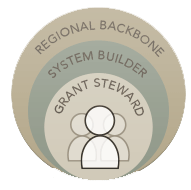 More than 1,200 Missouri employers are part of a growing list that tops 3,600 nationally for support of the National Career Readiness Certificate. The NCRC helps match employees to jobs based on verified skill levels. The support also helps local economies prosper through Certified Work Ready Communities (CWRC).
More than 1,200 Missouri employers are part of a growing list that tops 3,600 nationally for support of the National Career Readiness Certificate. The NCRC helps match employees to jobs based on verified skill levels. The support also helps local economies prosper through Certified Work Ready Communities (CWRC).
CWRC participating states, regions and counties offer a suite of ACT Work Keys assessments and the NCRC that measure an individual’s foundational workplace skills such as math, reading, information and locating skills required for a majority of today’s jobs. The NCRC complements such traditional credentials as high school diplomas, community college degrees, and certificates of technical proficiency. Academic credentials mark the fulfillment of an individual’s classroom learning experiences. The NCRC relies on standardized assessments and confirms an individual’s competence in a specific set of workplace skills.
Participation in Certified Work Ready Communities benefits not just one company, but an entire community. CWRC is helping job seekers locally understand what skills employers are looking for, and it helps local educators prepare students for success. And – they need employers to value their earning an NCRC!
Supporting a stronger workforce is easy. Recognize the NCRC when applicants present one. Recommend the NCRC for applicants and/or existing employees
Employers can also indicate the company’s support of the community’s certification effort on the national CWRC website. Information on external review of validity of ACT’s WorkKeys may be found here. This handbook to help get started using the ACT National Career Readiness Certificate.
 Employers can see the power of the NCRC at work through numerous case studies published by ACT. One of the most popular case studies features Missouri’s own Able Manufacturing and Assembly. The Able case study and others are indexed online for easy review.
Employers can see the power of the NCRC at work through numerous case studies published by ACT. One of the most popular case studies features Missouri’s own Able Manufacturing and Assembly. The Able case study and others are indexed online for easy review.








